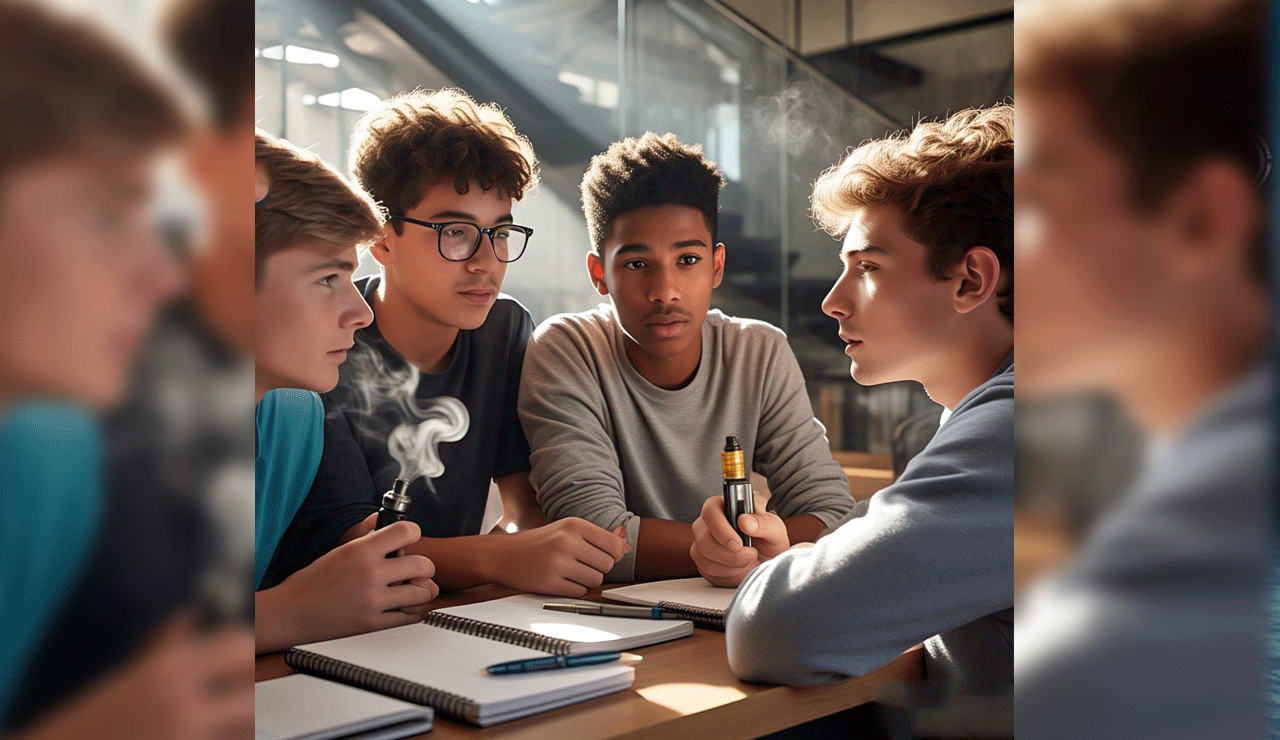Notebooks, Not Nicotine? The Secret Vaping Lives of Bengaluru’s Teens
In the shadows of India’s Prohibition of Electronic Cigarettes Act (PECA), 2019, a thriving underground vape market has taken root in Bengaluru’s school ecosystem, driven by informal teenage networks, encrypted messaging apps like Telegram, and backroom counters at neighborhood shops.

In the shadows of India’s Prohibition of Electronic Cigarettes Act (PECA), 2019, a thriving underground vape market has taken root in Bengaluru’s school ecosystem, driven by informal teenage networks, encrypted messaging apps like Telegram, and backroom counters at neighborhood shops. Students as young as 16 and 17 years old have developed a decentralised access system that circumvents the law, adult scrutiny, and school regulations.
Table of Contents
How the Teenage Vape Network Works
This network is built on trust, repetition, and referrals. First-time buyers don’t walk into a store and ask for a vape outright. They “hang around,” make small talk, and wait to be recognized. Shopkeepers, wary of law enforcement, observe potential buyers and only open their drawers for known faces or trusted referrals.
As described by Kunaal*, a Class 11 student:
“They act like they don’t even know what a vape is—until you come with someone they trust… After two or three visits, they might open the drawer.”
Social Media & Encrypted Platforms Fuel Access
Telegram has emerged as a central platform for vape menu circulation, price comparisons, and seller coordination. Students exchange screenshots, flavours, and prices through group chats, operating like a covert e-commerce system. Dhruv*, another student, explained:
Also Read: Tariffs, Delays, and Caution: Will Indian IT Survive the Global Jitters?
“We compare prices from Delhi, Chennai, Coimbatore… and place bulk orders with whoever’s cheapest. It’s like a group project.”
This network reflects a pan-India supply chain with localized access but national sourcing, defying legal restrictions.
What the Law Says: Vape Ban in India
Under PECA 2019, the manufacture, sale, distribution, advertisement, and even possession of e-cigarettes and similar devices are strictly prohibited in India. The Union Health Ministry has clarified that possession in any form is illegal, even though the Act doesn’t explicitly mention personal use.
Despite these laws, enforcement is lax, and in cities like Bengaluru, the ban has pushed the market underground rather than eliminating it.
The Allure of Vaping: Flavours, Peer Pressure, and Misinformation
The appeal of vaping among teens often starts with fruity flavours, curiosity, and peer influence. What begins as a trend or dare quickly evolves into daily use, exacerbated by misinformation about its safety and the absence of open discussion in schools or at home.
According to a psychotherapist interviewed in the report, the underlying issue isn’t just the availability—it’s the psychological vulnerability of teens in high-pressure academic environments, with easy access to addictive substances and little guidance on the health consequences.
Health Risks and Lack of Awareness
Medical experts warn that e-cigarettes typically contain nicotine, a highly addictive stimulant that impacts adolescent brain development. The aerosol produced contains other harmful chemicals, and long-term use can lead to respiratory issues, addiction, and mental health concerns.
Unfortunately, in the absence of structured awareness programs, most students rely on hearsay or peer input to form their opinions on vaping.
A Growing Crisis Hidden in Plain Sight
The rise of teen vaping in Bengaluru’s schools exposes serious gaps in policy enforcement, parental supervision, and mental health education. What appears to be a harmless social trend is, in reality, a growing public health concern.
As underground access grows more sophisticated, so too must the response from educators, policymakers, and parents to address the real risks and rising influence of illegal vaping networks among teenagers.
